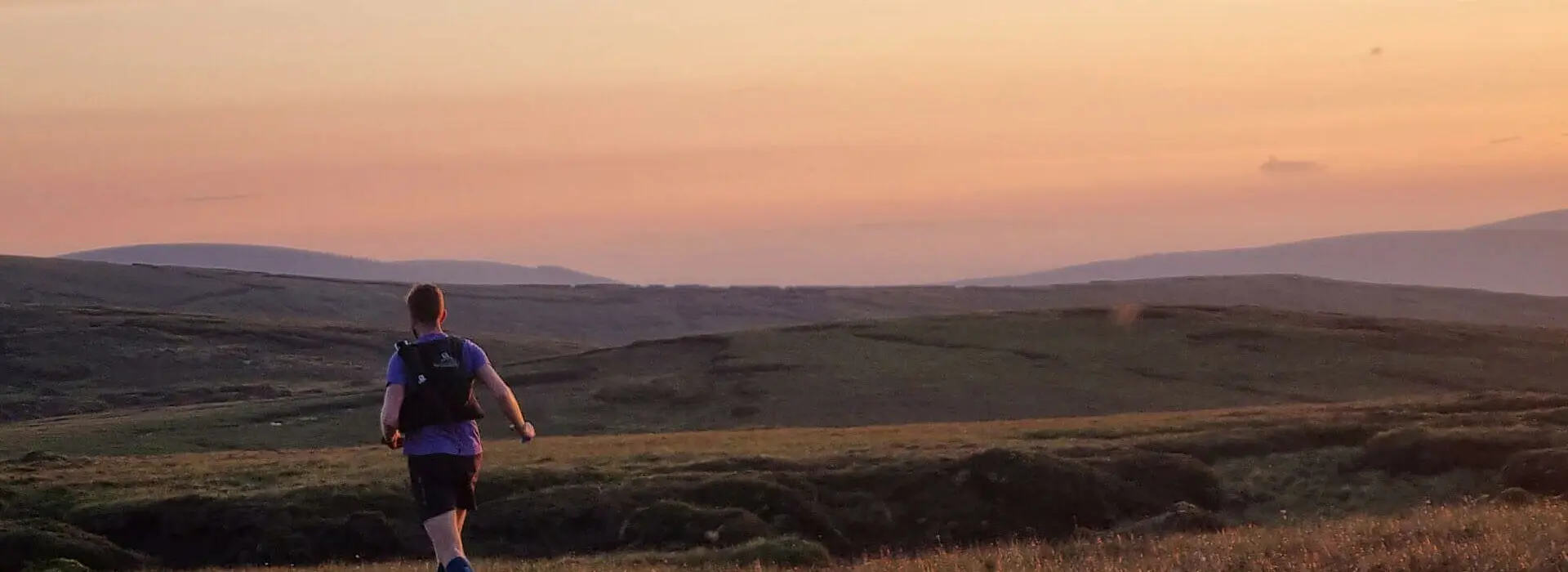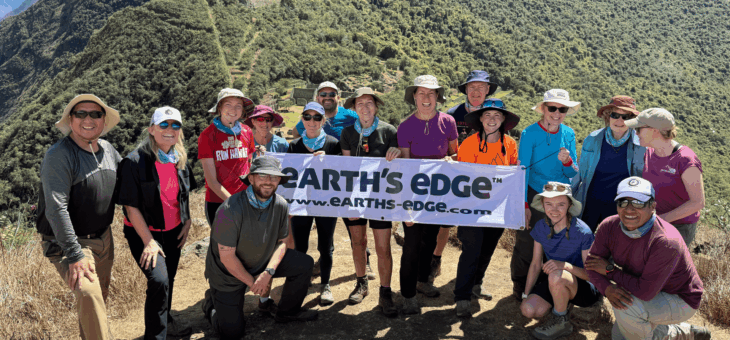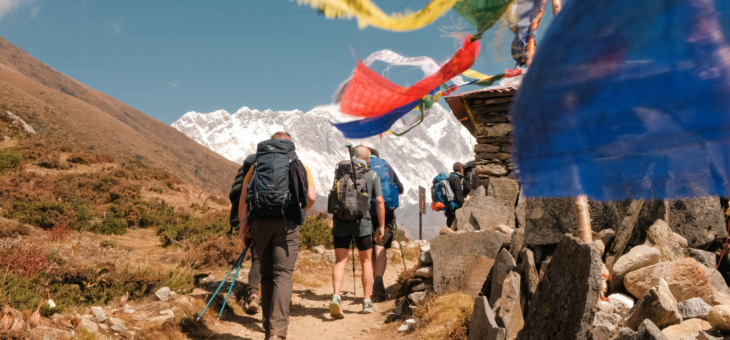On paper, the Wicklow Round doesn’t look too bad to ultra runners. It is about 115km in total, a 24 hour and 6,000m challenge across 26 of Wicklow’s tallest mountains. As well as that, the rules state that you can only navigate using a map and compass (no GPS or mobile devices).
When is the challenge? Well you can decide when you want to start, and although you are not allowed any navigational support on the mountains, you can have support along the route to help you re-supply food, water and other bits and bobs! Yes, for the ultra runner, on paper, the Wicklow Round looks like fair game. But don’t let that fool you!
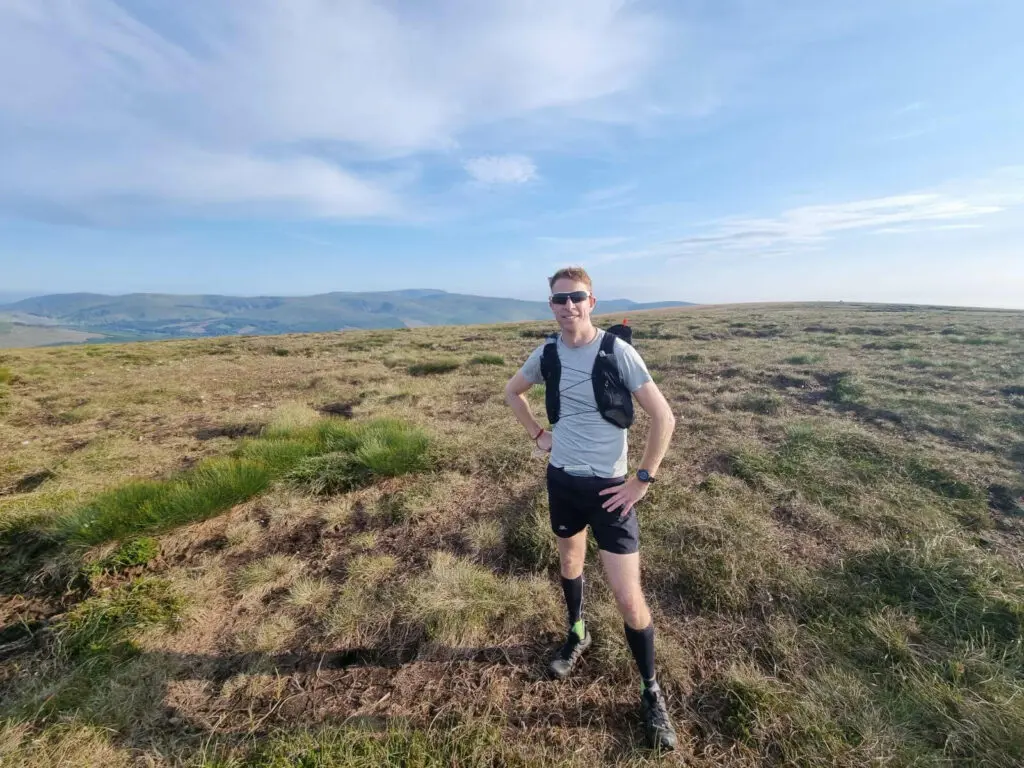
Signing up
My sister first told me about the Wicklow Round in February and immediately I was intrigued… so I rang Jam to ask if he would be interested in signing up for the challenge as a duo. It didn’t take much persuasion! Before long we had both decided we were going to do the Wicklow Round together in July 2021.
Meanwhile, Jam trained like an Olympian. As I was living in England, he did all the navigation and recce. One of his messages mentioned 15-20 hours of training per week. I assumed that was a typo; I should have known better, the warning signs were there!
Challenge day
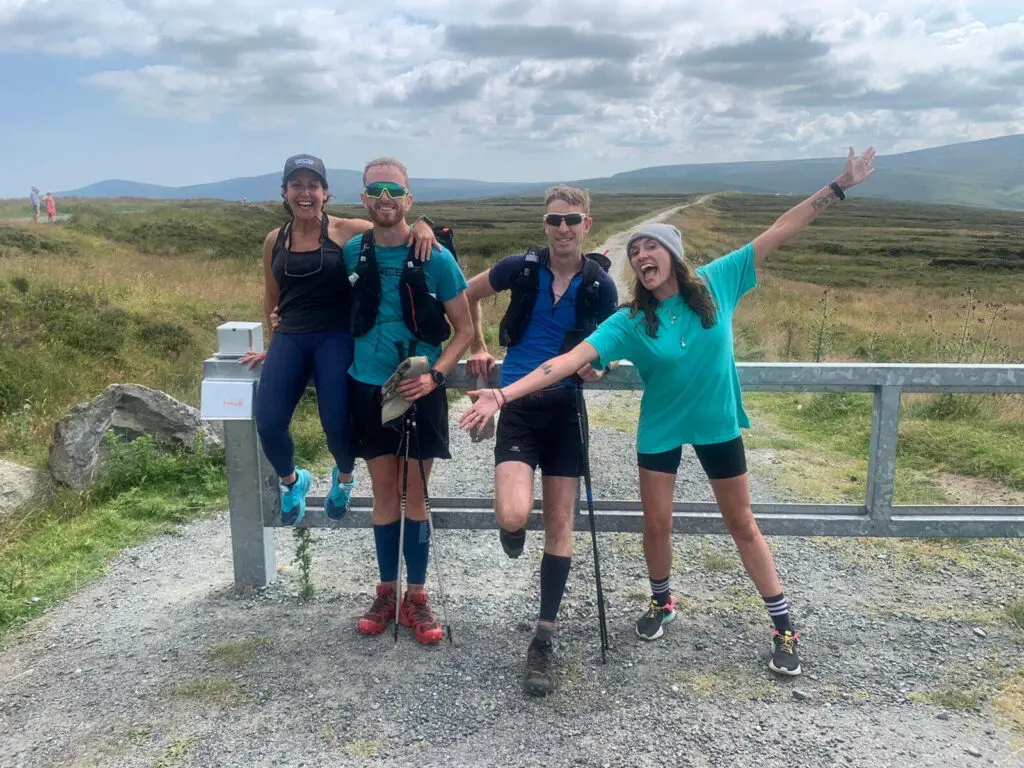
We drove to the start in Jam’s camper. Jam had organised a cracking support crew with Jenny (Jam’s girlfriend) and Ele (Jam’s friend). Both Ele and Jenny were soon to become our guardian angels. We were to start the challenge at 3PM on a Saturday afternoon and we would have 24 hours to finish the loop. Nerves were high, but we were proudly waved off by our enthusiastic supporters.
And so it begins…
Stage 1
Stage one of this thing is a piece of cake. We trotted up an easy hill called Kippure, then down the other side on smooth tarmac, all the way to Sally Gap. Jam was huffing and puffing a bit in the heat, saying something about his heart rate. “No problem” I said, “I’ll look after you”.
Stage 2
Stage 2 is more of a traditional mountain run. It’s also easy to navigate under clear blue skies and with dry ground underfoot. Wide ranging views down memory lane as we cruised over Carrigvore, Gravale, Duff Hill, Mullaghcleevaun and on and on. Simple bearings off tops, keeping the high ground. We were over Silsean around 7pm, moving steadily. And then things went downhill.
I’ve been living in Britain for 14 years now, and have become accustomed to things called public rights of way. In Britain, I can merrily roam through hundreds of miles of countryside without having to squeeze through any barbed wire, climb any walls or crawl through any brambly thickets. I’d forgotten that this is the sovereign Republic of Nutters. I’d gone all soft.
Stage 3
Over this fence, down this wall, through this gap, along this tree line. Not a boot print in sight. You can’t navigate this. You have to know it. This was where Jam had invested his 15-20 weekly hours.
We popped out at Ballinagee Bridge, grabbed some food and headlamps from our crew, then plunged once more into the overgrown mass. By the time we reached open ground again around Oakwood, it felt like I had aged a year, and I was starting to recognise that this really wasn’t how it looked on paper.
Thankfully the visibility was perfect and Arts Cross revealed itself with spiritual clarity. We shuffled on towards Table Mountain, moving fluidly now as the sun slipped below the horizon. Lugnaquilla around 11pm cut a dramatic silhouette against a fiery full moon. As mountain scenes go, it doesn’t get much better. And then running, downhill, on firm ground and boardwalk, flowing, all the way to Drumgoff.
Stage 4
Stage 4 was now upon us, the heart of darkness. Things were always going to slow down in the wee hours, but we moved well over the climb to Mullacor, and the traverse to Derrybawn. Jam seemed to be growing into the race now. He was striding confidently, onwards, upwards and we were sticking to our golden rule: “never, ever stop”.
Stage 5
I had warned Jam that, at some point, the wheels might come off. However, in the end it was only my wheels that wobbled. They started to loosen on Stage 5, on the climb up Camaderry, around 4am. I started to feel dizzy and sick. I tried some food, some caffeine, another layer, each bringing some temporary relief, but none restoring full strength. I had been here before, and I knew that I really only had 2 options left: slow down significantly, or find a time machine and do some proper training. We weren’t in such luck though, to finish within the 24 hour period we had no choice but to maintain our pace.
So we trundled on, whizzing through the aid stops in under 5 minutes. Jam began to grow bolder by the hour while I racked up a bigger and bigger deficit. He had invested so much in this whole project and the rules strictly forbid a split of a running pair. Jam could only succeed if I succeeded. It was not a comfortable position to be in.
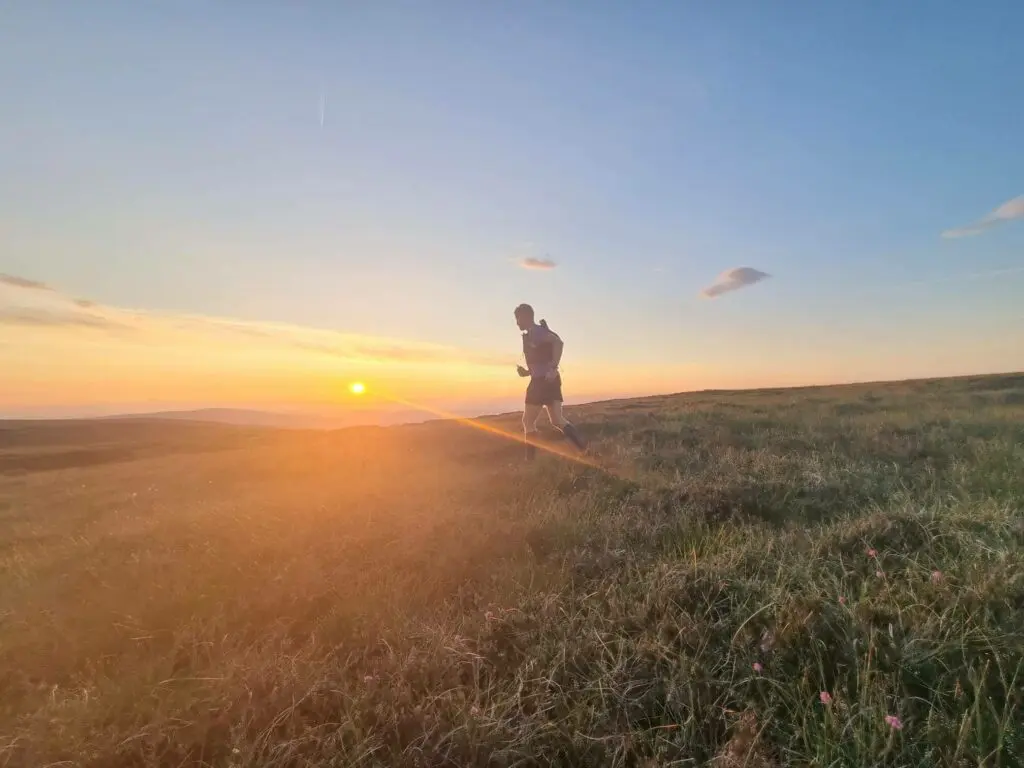
Stage 6
Stage 6 was short and fairly straightforward. We went over Tonelagee to a silvery dawn and down to Glenmacnass on a quick trail. I still felt like puking, but then again, the 24 hour target was still viable. We just needed to maintain that pace, slow as it was. And then, Stage 7 happened.
Stage 7
Stage 7 is impossible without advance scouting. We climbed to Scarr reasonably smoothly, getting there by 7am, then plunged into a direct(ish) line to Knocknacloghoge and onto Luggala. It is not much more than 5km, and it took 2 ½ hours. This can’t be called trail running, because there is no trail. The bracken was over head high, the heather grazed our knees. If I was struggling before, I was suffering now. Meanwhile, Jam just kept marching, obsessively repeating the line “We’ve got this, dude”.
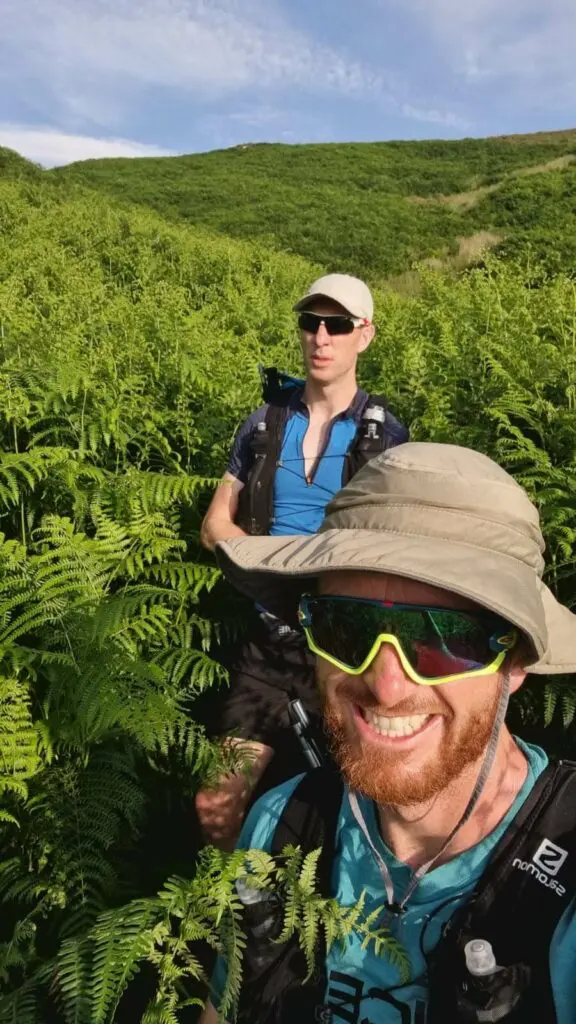
I was now in some difficulty, and had been for some time. I had been burning through aid stops like a sprint triathlete, running the engine dry. I had to find something, from somewhere.
And then I fell into a big dirty hole. The hole swallowed me, and it swallowed me whole. One second I was on the surface of the earth, the next I was in a cave, waist deep in water, blood gushing from my arm, in an 8 foot deep pit. Then Jam came to the rescue with characteristic compassion: “Irv, if you’re not dead can you hurry up and find a way out of that cave. We have 5 more peaks to hit and only 5 hours to do it.” I crawled downstream and found an exit, up into the daylight and back on the route. And that was the end of Stage 7, battle of the bastards.
Stage 8
Thankfully, Stage 8 was a bit more normal, and we actually started gaining some time back. Djouce was busy with walkers, who glanced at us with some degree of alarm. War Hill next, then Tonduff North, then more crappy ground to bring us to the final checkpoint. We had about 2 ½ hours to get over Prince William’s Seat, Knocknagun and down to the finish. It was possible. All we needed was some good ground… surely we were due a bit of good ground.
Nope, the ground from the Glencree River to Prince William’s Seat is heinous – possibly the least enjoyable hiking I have ever done. At this stage I was just following Jam’s feet, hunched down through woodland, getting stabbed in the face with branches, stung by nettles, stripped by briars. This is the part of the Wicklow Round that you just don’t get on paper.
One hour to go
With only one hour to go I had to put my pain aside and finish this race with Jam. We had journeyed for 108 km together, across the best of Wicklow and the worst of Wicklow. We picked up the pace and literally just ran – after all, Jam’s great project hung in the balance. With all that last minute effort we finished the race with a nail biting time of 23 hours, 49 minutes.
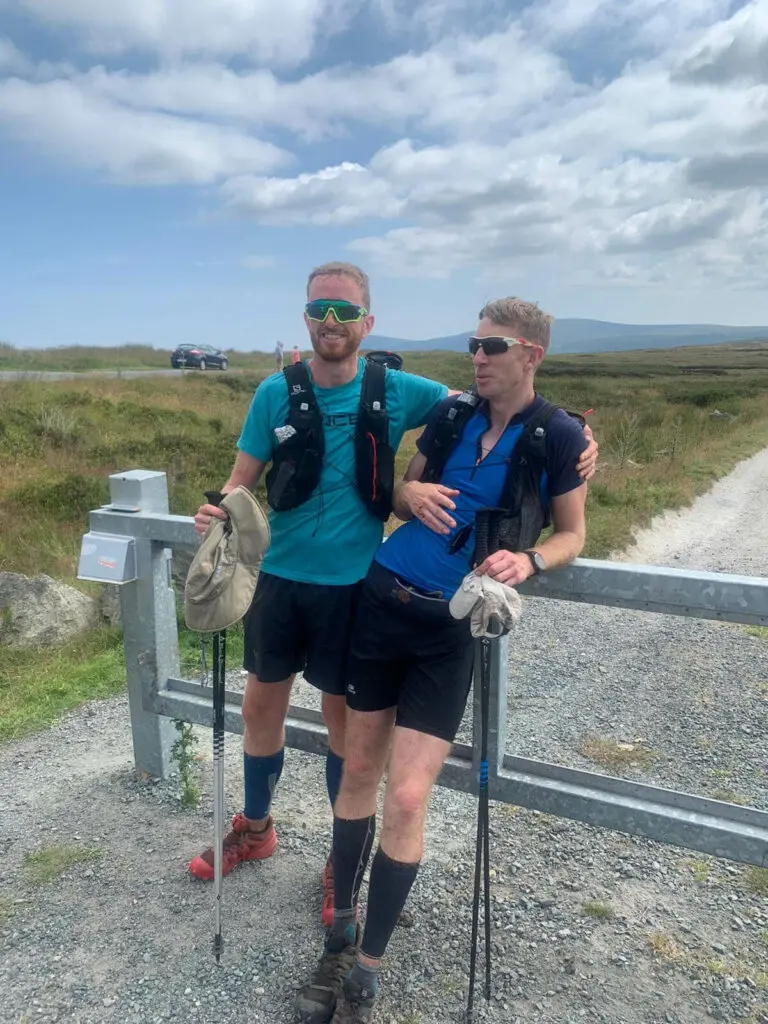
As you will have gathered, it was largely Jam’s achievement and he deserved it thoroughly – a remarkable first attempt at ultra mountain running. But like all these things, the real joy is not in the big headline numbers, but in the little things. The silky sunset, the vivid moon, the tears and smiles, the realisation that hard things can be made less hard with the right attitude. Above all, it’s about the people, their warmth and laughter as they shove a cheese sandwich at you with nothing but a grunt in return. Those fine folk are listed below.
This thing is not how it looks on paper. It is far, far better than that.
Colin Irvine
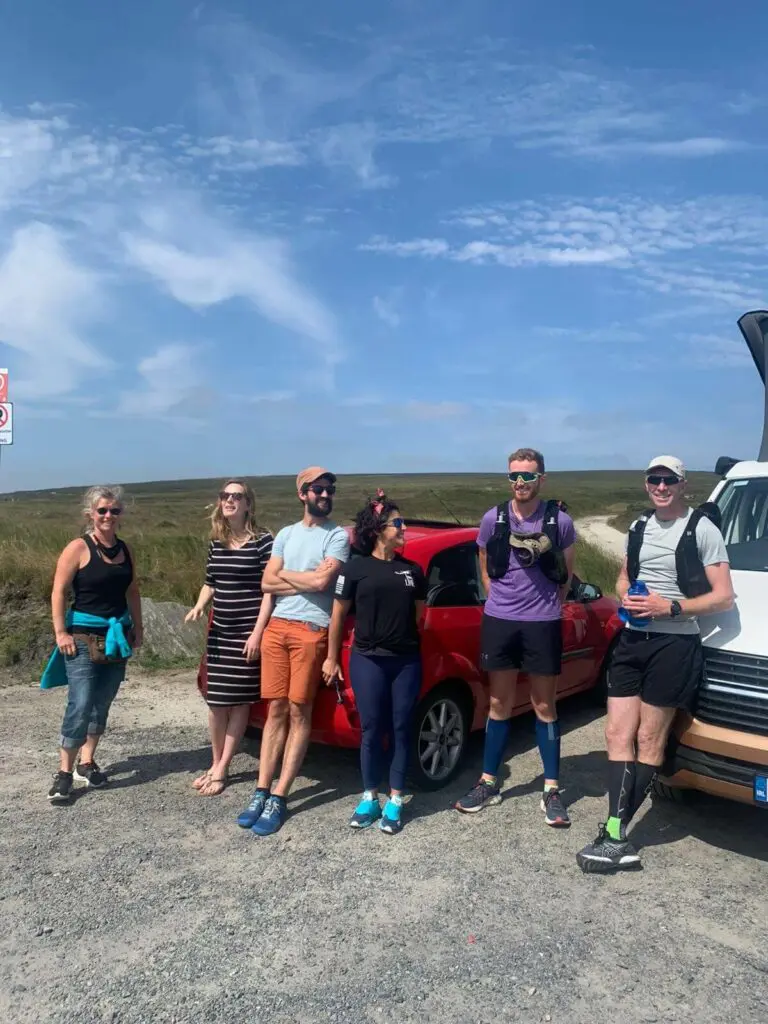
With special thanks to:
Jennifer Charron and Eleanor McAree – Saints of the Van
Simon Connaughton, Cormac, Aideen, Aishling Farrell, John Mollihan, Patrick Ward, Louise Lawrence, Andy Thompson, Stephen O’Donoghue, Mike Jones, Hannah Irvine, Ciaran Croke.
And all those other super people who threw their advice and support our direction.
